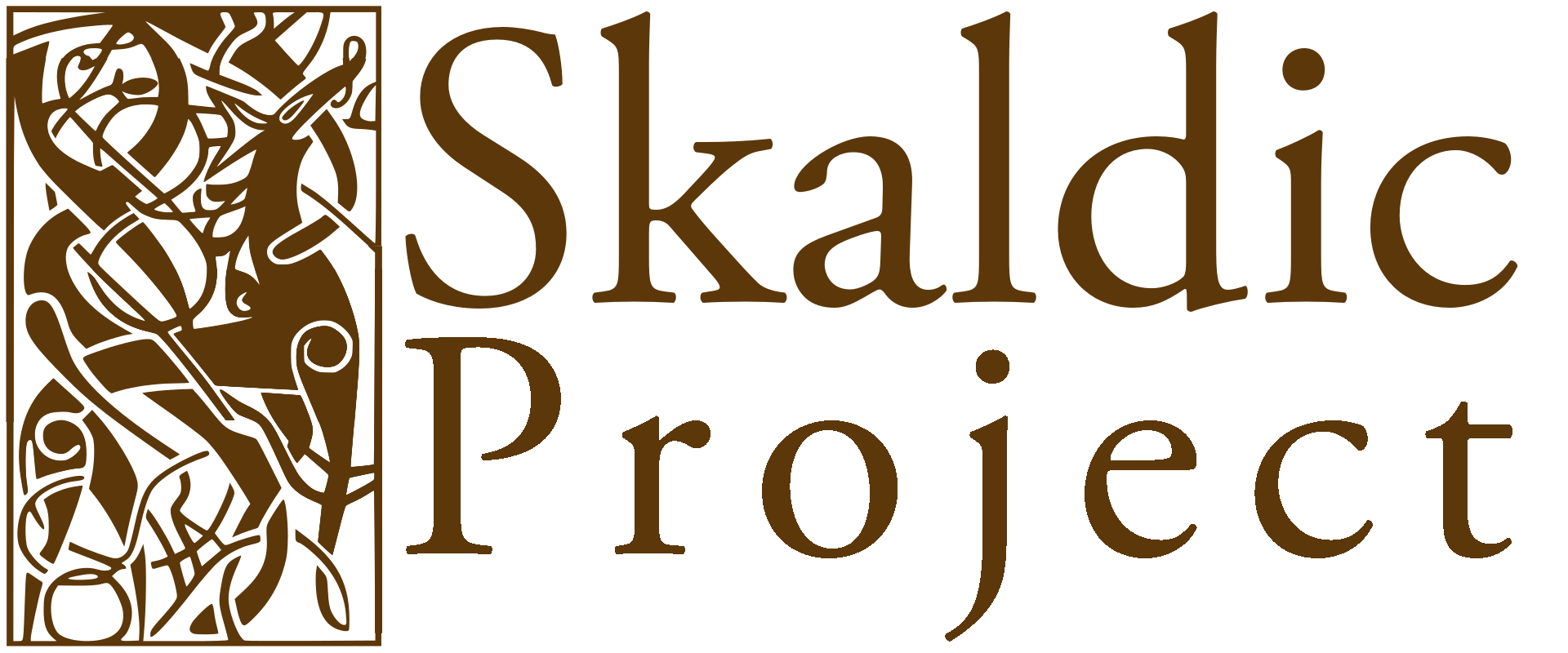Note to Oddi Lv 1II
[3-4] bandalfr beiði-Rindi Baldrs ‘the elf of the belt of the begging-Rindr <giantess> of Baldr <god> [(lit. ‘belt-elf of the begging-Rindr of Baldr’) = Frigg (ey ‘island’) > SEA (marr ‘sword’) > WARRIOR]’: The reading here follows that of Finnbogi Guðmundsson (ÍF 34, 203) and Bibire (1988, 231). The warrior-kenning uses ofljóst ‘too transparent’: Frigg, the goddess who begged for the release of Baldr from Hel, is also an island-name (Þul Eyja 4/3III); the ‘belt’ of an island is the sea (marr) which is also a ‘sword’ (Þul Sverða 3/5III), and the ‘elf’ of the sword is the warrior. Poole (2006, 150-2) has the same reading but a very different interpretation, based on his supposition that the scene depicted on the tapestry is from the story of Starkaðr. His interpretation is not adopted here on the grounds that it ignores the clear parallelism in the st. between this kenning and the extended kenning hlœðendr hleypiskíða hlunns ‘the loaders of the leaping skis of the roller’ in ll. 7-8 (although that admittedly does not make use of ofljóst). Poole contends (2006, 151-2) that Baldrs beiði-Rindi is a woman-kenning, using an allusion to Baldr in Anon Bjark 6III to argue that the kenning refers to a woman associated with the Dan. royal dynasty. Poole (2006, 151-2) also maintains that ‘the verse envisages the striking of a woman, additional to whatever male-to-male confrontation and aggression we see described in Rǫgnvaldr’s stanza’, although there is also clear evidence of ‘male-to-male ... aggression’ in l. 5 of this st. It is indeed assumed here that the two sts represent two different interpretations of what the poets saw on the wall-hanging, but that this difference is not quite as radical as that suggested by Poole. See further the Notes to Rv Lv 13.
References
- Bibliography
- ÍF 34 = Orkneyinga saga. Ed. Finnbogi Guðmundsson. 1965.
- Bibire, Paul. 1988. ‘The Poetry of Earl Rǫgnvaldr’s Court’. In Crawford 1988, 208-40.
- Poole, Russell. 2006. ‘Some Southern Perspectives on Starcatherus’. Viking and Medieval Scandinavia 2, 141-66.
- Internal references
- Margaret Clunies Ross (ed.) 2017, ‘Anonymous Poems, Bjarkamál in fornu 6’ in Kari Ellen Gade and Edith Marold (eds), Poetry from Treatises on Poetics. Skaldic Poetry of the Scandinavian Middle Ages 3. Turnhout: Brepols, p. 503.
- Elena Gurevich (ed.) 2017, ‘Anonymous Þulur, Eyja heiti 4’ in Kari Ellen Gade and Edith Marold (eds), Poetry from Treatises on Poetics. Skaldic Poetry of the Scandinavian Middle Ages 3. Turnhout: Brepols, p. 977.
- Elena Gurevich (ed.) 2017, ‘Anonymous Þulur, Sverða heiti 3’ in Kari Ellen Gade and Edith Marold (eds), Poetry from Treatises on Poetics. Skaldic Poetry of the Scandinavian Middle Ages 3. Turnhout: Brepols, p. 794.
- Judith Jesch (ed.) 2009, ‘Rǫgnvaldr jarl Kali Kolsson, Lausavísur 13’ in Kari Ellen Gade (ed.), Poetry from the Kings’ Sagas 2: From c. 1035 to c. 1300. Skaldic Poetry of the Scandinavian Middle Ages 2. Turnhout: Brepols, pp. 590-1.
